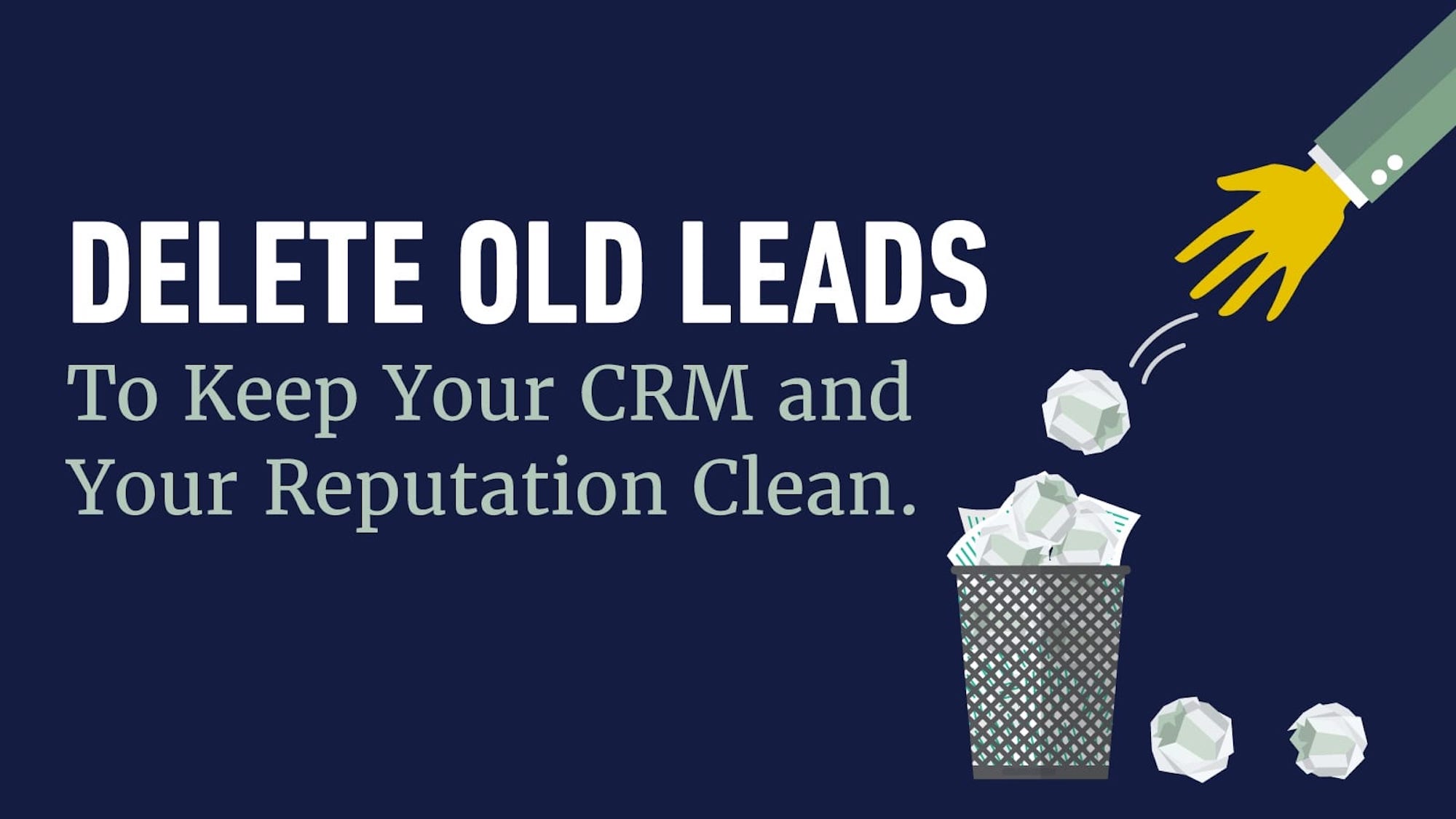When to Delete Old Leads

Keep Your CRM and Your Reputation Clean by Setting a Policy for When to Delete Old Leads
We know. You’ve worked hard to generate the leads in your CRM — so the idea of deleting them probably sounds horrifying. But the fact is if they’re not engaging with you, having dead leads in your Salesforce system could be doing more harm than good. First, old, inactive leads clutter up your database. This can lead to poor user adoption and experiences, and it makes it harder to focus on viable prospects. Second — and this is the biggest danger — continually reaching out to unengaged contacts could prevent you from being able to reach anyone.
Here’s why:
Unengaged Leads Can Hurt Your Email Sender Reputation
Google, Microsoft, and other major email providers are working hard to ensure you only receive email messages that are relevant, safe, and desirable. And rightly so. These days, our inboxes can easily become overwhelmed with cold emails and newsletters, making it hard to sort out the most important messages. And security threats such as phishing and malware attacks are more common than ever.
To help prevent junk emails from reaching your inbox, providers have started keeping score on the emails we send. Each unique email address has a sort of scorecard on file with each provider. This is often referred to as your sender reputation or your deliverability score. Of course, there are complicated algorithms in place to determine your score. But, generally, when people open, click on, or reply to your emails, your score goes up. When they ignore them, mark them as junk, or unsubscribe from your list, your score goes down.
If you are only using your email address for interpersonal communication, these small actions probably won’t have much of an impact. But if you’re a marketer or salesperson who sends hundreds or even thousands of emails a day, your sender reputation will suffer if a high number of your emails are consistently ignored.
If your reputation takes a dive, email providers are more likely to route your emails to spam or block your messages altogether. So, a low deliverability score could prevent you from consistently reaching anyone’s inbox in the future.
Cleaning up dead leads in Salesforce and removing people from your list who are consistently unengaged can help you maintain your sender reputation. Plus, this ensures you’re only reaching out to those who are genuinely interested in your products or services. One of the most effective ways to make sure that this cleanup happens on a regular basis is to create and follow a sunset policy.
How to Create and Implement a Sunset Policy for Salesforce Leads
A sunset policy is simply a set of protocols and an action plan for when to delete old leads. Having a sunset policy is a key component of properly maintaining Salesforce data and keeping your org in tip-top shape.
Check out our Six Steps to Clean Up Your Salesforce Org
The first step is to identify leads with outdated or inaccurate information. If all of your emails bounce and the phone number you have on file is inaccurate, there’s little point in keeping the contact on your outreach list. You can either delete them or mark them as inactive if you’re concerned about retaining historical data associated with the contact.
Next, you’ll want to define criteria for when to label a contact as “unengaged.” Salesforce and the many email marketing tools that integrate with it have built-in analytics to help you evaluate contacts’ engagement.
Reviewing your email send, open, and click-through data should help you gain a sense of what might be considered “normal” engagement for your email list. As behaviors, habits, and preferences tend to vary from audience to audience, there’s no set standard. However, if you’re at a loss as to where to begin, it’s probably a safe bet to flag any contact who has received, but hasn’t opened, the last ten emails you’ve sent.
Once you’ve identified your unengaged prospects, you need to decide what to do with them. You have three choices:
- You can delete them (or mark them as inactive) and move on.
- You can unsubscribe them from your email marketing lists but maintain them for other outreach methods such as telemarketing.
- You can attempt to re-engage them one last time via email.
The first two options are relatively straightforward. The third requires some planning and creativity. If you go this route, you’ll want to develop a re-engagement campaign to entice leads to interact with you again and renew their interest in your organization. You might make them an irresistible offer. You could send one last email with your most popular content. You could send them a highly personalized email. Or you could even just ask “do you want to continue receiving email from us?”
Whatever your strategy, make sure you follow up afterward and remove anyone who doesn’t respond within a few days. Then create a schedule for keeping your list clean in the future. If your sales or marketing team sends emails often, you may want to repeat this process on a monthly basis. If your email outreach is less active, quarterly or every six months may be sufficient.
Need help maintaining your Salesforce data? Get in touch! Our virtual admins can run regular cleanups on your schedule and according to your processes.


